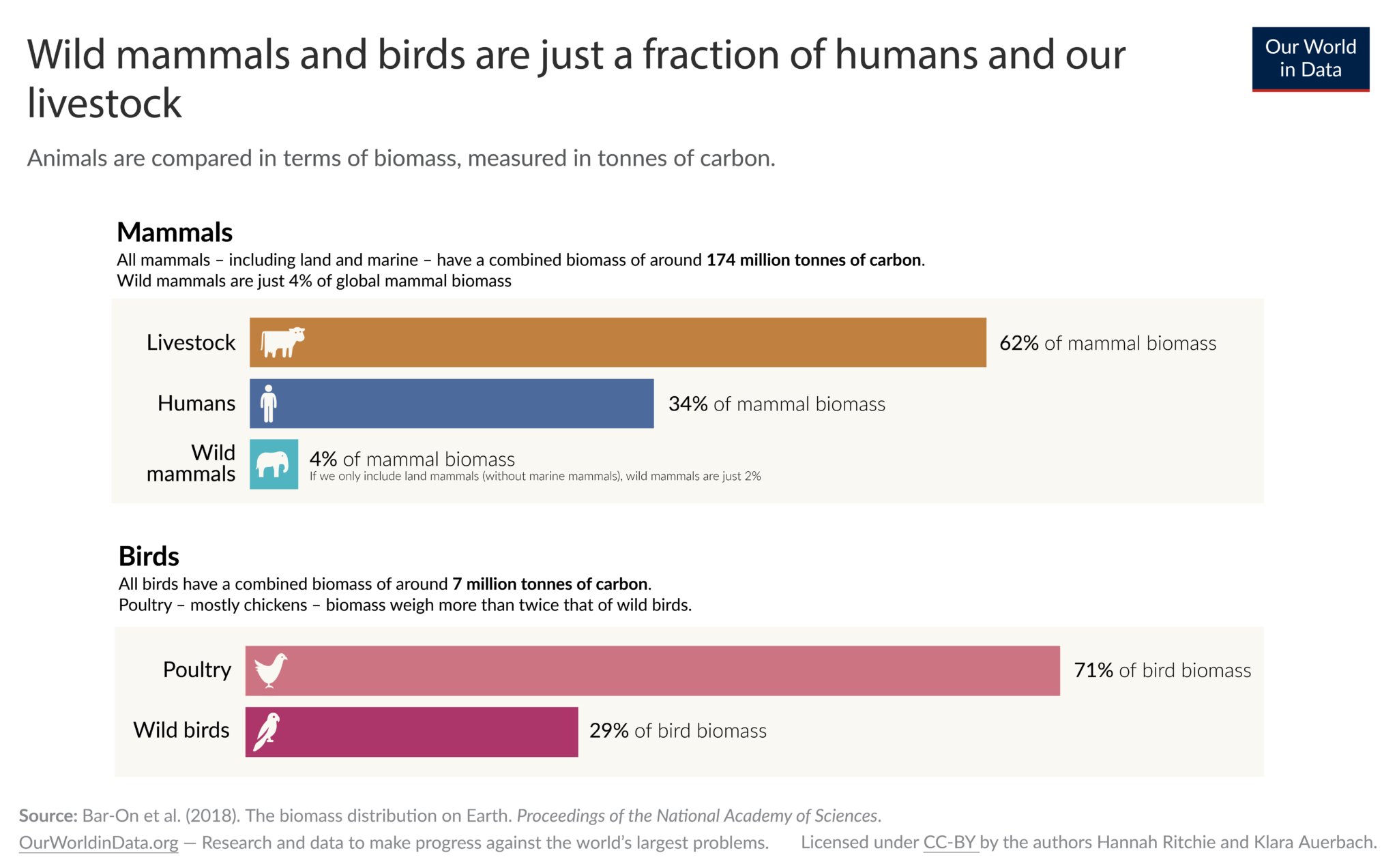Lab Sheet for Patient Earth
|
Biomass DistributionThe composition of the biosphere is a fundamental indicator of the health and stability of the biosphere. Research is aiming at a global quantitative account of the biomass of each taxon, which is still lacking. A recent census of the biomass of all kingdoms of life was compiled by Bar-On et al. (2018). This excellent analysis provides a holistic view of the composition of the biosphere and attempts the identification of broad patterns over taxonomic categories, geographic locations, and trophic modes. A main conclusion of this study is that “over the relatively short span of human history, major innovations, such as the domestication of livestock, adoption of an agricultural lifestyle, and the Industrial Revolution, have increased the human population dramatically and have had radical ecological effects.” As a result, the biomass of modern humans of about 60 Mt C (mega tonnes of Carbon) and the biomass of livestock of 100 Mt C, which is dominated by cattle and pigs, far surpass that of wild mammals, which have a mass of about 7 Mt C.  This rapid change in the composition of the biosphere comes with the possibility of state shifts in the biosphere. Ripple et al. (2015) pointed out that the ongoing collapse of the world's largest herbivores ... |
